Yearning for a picnic spot for a day trip on the outskirts of Mumbai, then Kanheri caves are a perfect destination for you. Kanheri, originated from Sanskrit word Krishnagiri which literally means black mountains.
Kanheri caves, a symbol of the Buddhist influence on the art and culture of India is located in western outskirt’s of India’s financial capital, Mumbai. The caves are located within the forests of Sanjay Gandhi National Park(SNGP) at a distance of about 6 kms from the main entrance. One can travel to the caves by their own vehicle, bus, cycle or walking. The last two options being the most healthy one and you can also enjoy the surrounding of the park. There is regular bus service to the caves after every hour. One has to buy tickets at the entrance of the national park, with vehicles being charged separately we need to buy tickets for them as well. The caves can be visited between 9 am and 5:30 pm and are closed on Monday.
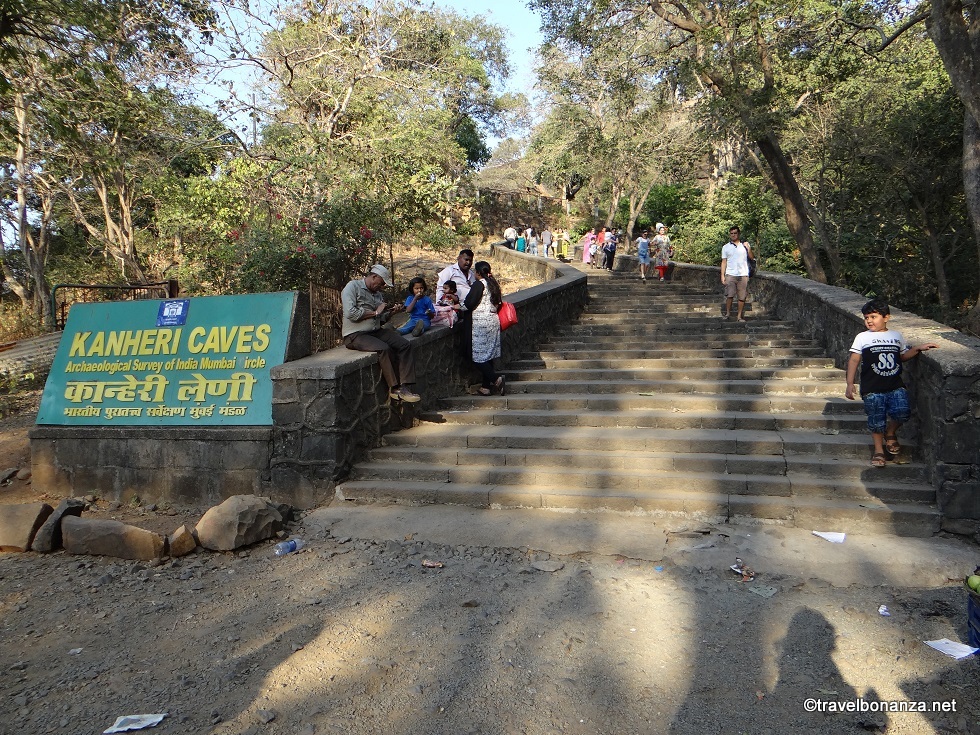
Entrance to Kanheri Caves
Once at the foot of the hill housing the caves, we get the feeling of a typical archaeological site. The place has ample parking space to park your vehicle. As we climb the flight of stairs, the ASI signage let’s us know that it’s an archaeological site. The entry to the cave is separately charged at the cave entrance. As we enter the premises we can see the inscription depicting the importance of the this place in both Hindi and English language. Moving further a bit ahead we start to see the large cave structures and the drainage system carved out on the hill.
Kanheri caves were excavated on volcanic(basaltic) rocks and hence its name. These are a set of 109 caves dating back to almost 2000 yrs old to the period as early as 3rd century B.C and were in occupation till 11 century A.D. Kanheri is credited with the largest number of cave excavations on a single hill. The caves at Kanheri served the purpose of education center for Buddhist monks and was one of the significant place for literary activities. The Buddhist monks maintained a disciplined life in the caves to attain salvation.
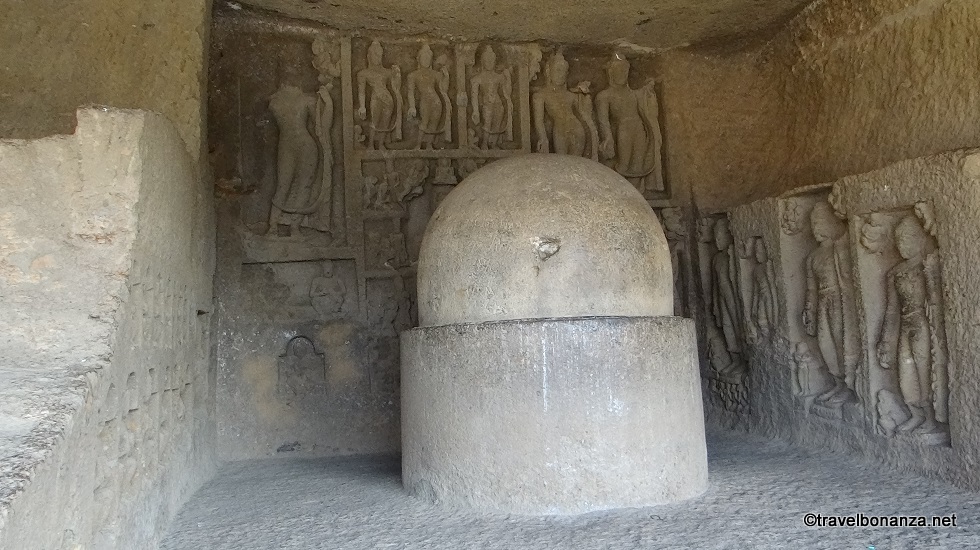
A Stupa at the Kanheri Caves
The excavations at Kanheri are of the following types:
(i) Chaityagrhas, the place of worship of the Buddhist community. These contains rock cut Stupas meant for group worship and religious meetings.
(ii) Viharas or monasteries, they consist of single and multiple celled where the Buddhist monks resided. These contains rock cut platforms serving the purpose of bed.
(iii) Podhis or water cisterns, which were excavated ingeniously to trap the rain water and store them for use during summer periods and
(iv) rock-cut benches and seats. The caves are generally small consisting of a single cell with a front pillared verandah approached by a flight of steps.
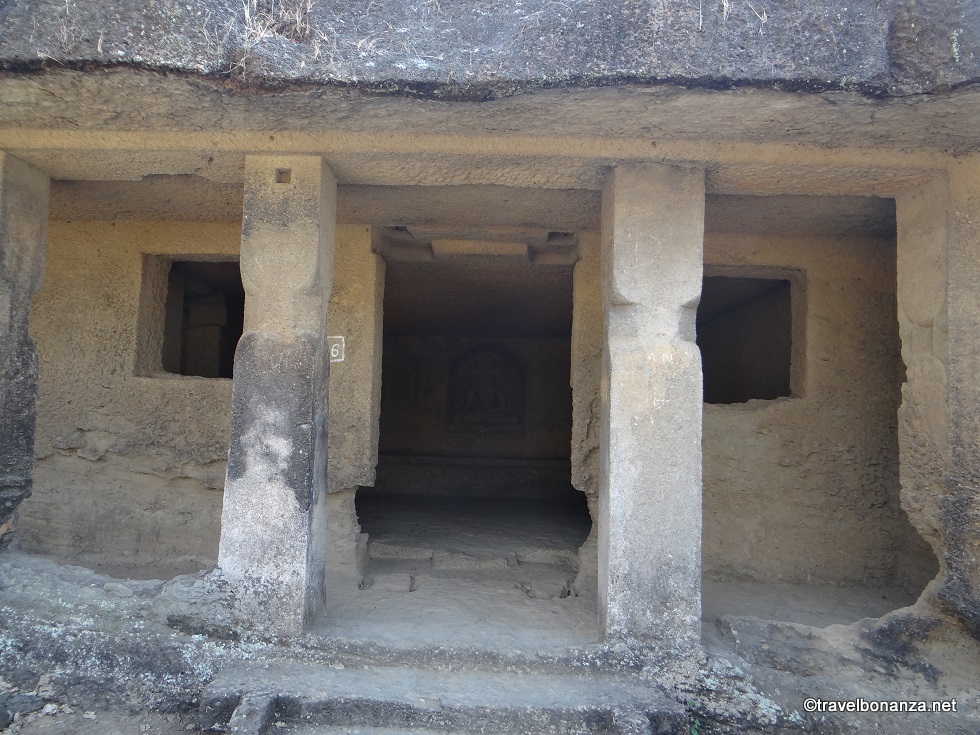
A typical cave where the monks used to live
One of the most appreciated work in Kanheri caves is its water system. In the hills are carved out a very innovative system for collecting and storing rain water using canals and cistern. There are water tanks provided at the entrance of almost each cave. There are many sculptured statues of Buddha, on the outer sides of the wall. The image of Buddha is generally shown either standing or in seated posture.
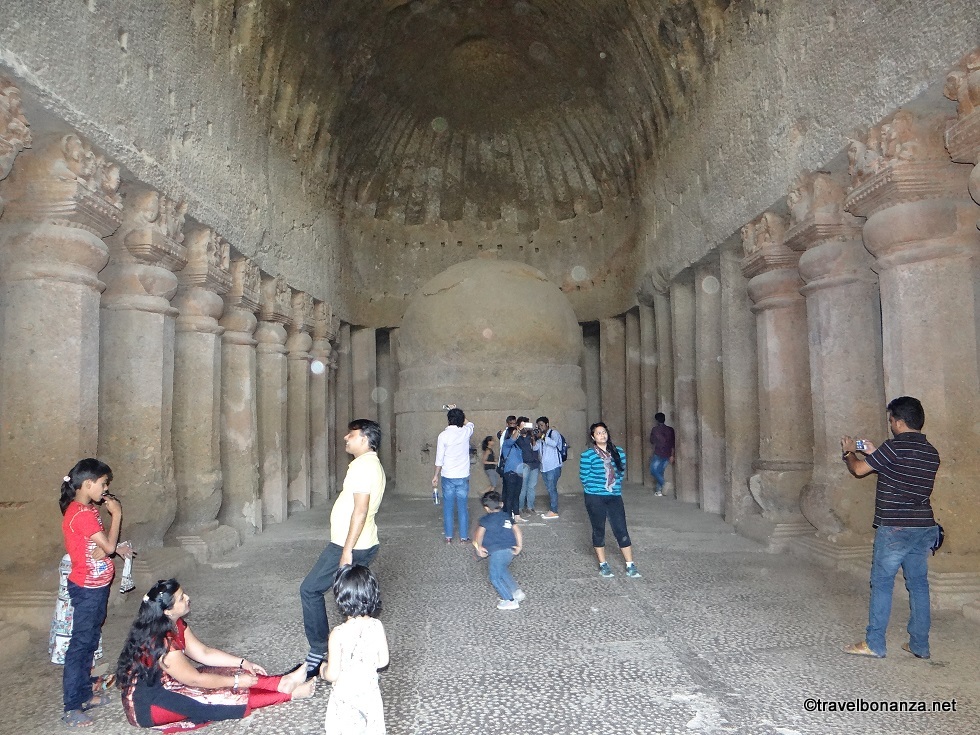
Cave 3 at the Kanheri cave which is a Chaityagriha. Stupa can be seen in the front.
Cave 3 is the most prominent of the caves which is a Chaityagriha, was excavated around the period of 172 -201 A.D. It is one of the largest in India. It has a row of 34 pillars. The side walls are sculpted extensively with two massive images of standing Buddha in varada mudra and other Bodhisattva images. Cave 1 is unfinished Chaityagraha dating back to 5th – 6th century A.D. Cave 11, also known as the ‘Durbar hall’ is a huge hall with front verandah. Interesting sculpture of Avalokitesvara is found in Cave 41 which is a four armed eleven faced one, the only of its kind in India. The Jataka stories are also found depicted as that of Dipankara Jataka in Cave 67.
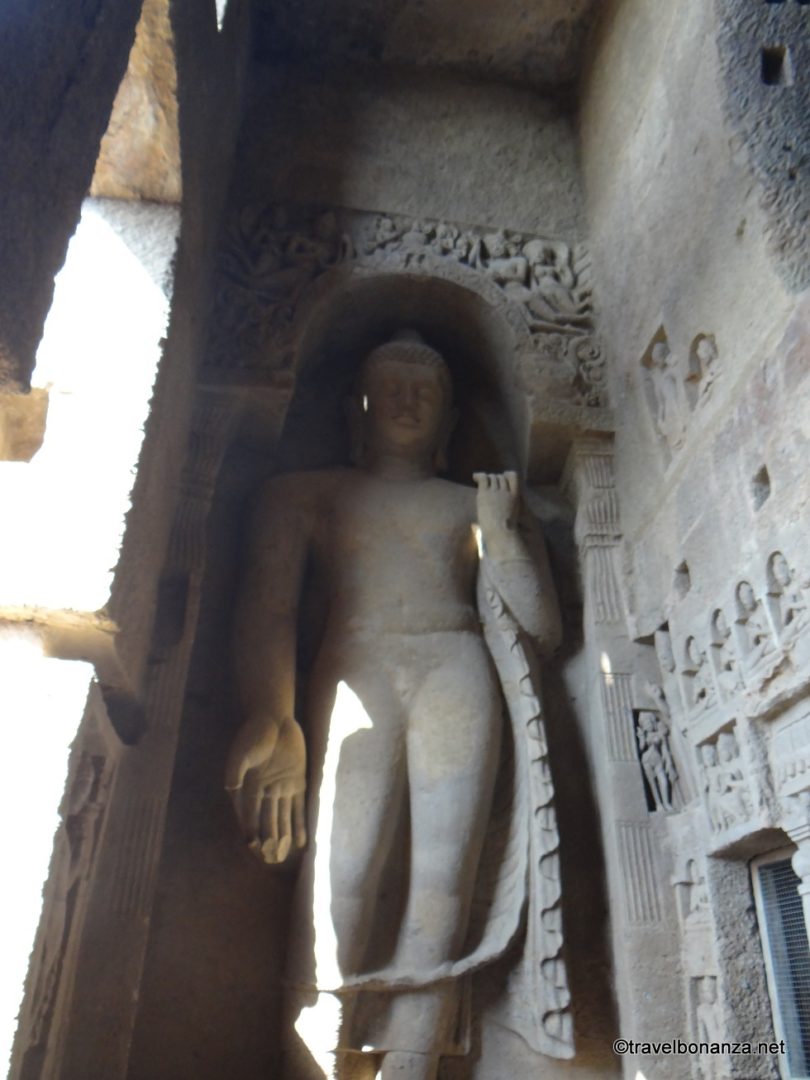
Standing Buddha outside the Chaityagriha at Kanheri caves
Nearly 51 legible inscriptions and 26 epigraphs are found at Kanheri, which include the inscriptions in Brahmi, Devanagari and 3 Pahlavi. There are several paintings on the wall of the caves. The Viharas had trade links with Sopara, Nashik, Kalyan, Paithan, and Ujjain.
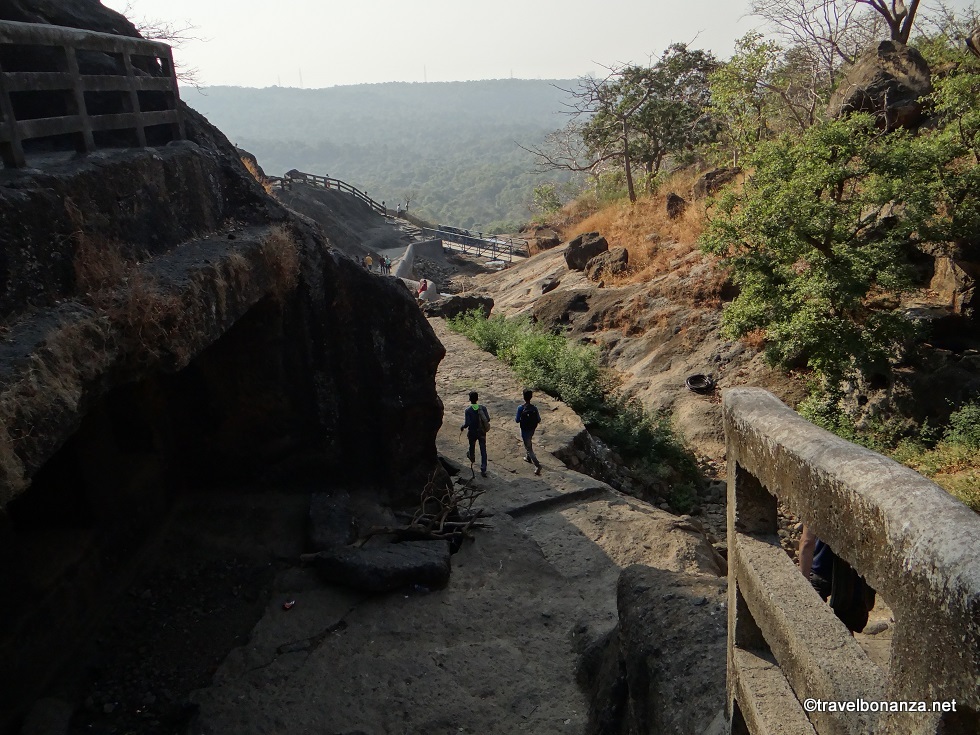
Beautiful location at the Kanheri caves
Kanheri caves serves a great attraction for the history and nature lovers. Best time to visit the caves is early part of monsoon just after few showers to enjoy the greenery and waterfalls here and there. With its proximity to a developing mega city and the forest of Sanjay Gandhi National Park surrounding it, in addition to the clear blue sky across the hills, it’s a perfect weekend destination for picnickers and a good spot for photographers to test their skills.
Nearest Railway Station – Broivili Railway Station(7 kms)
How to Reach – Regular bus service from Borivili Railway station. Or reach SNGP by auto/bus and trek from there on to the caves.
Timing – 9 AM to 5:30 PM
Open On – All days except Mondays
Tickets – for SGNP, to be bought at the park entrance and for Kanheri Caves , at the cave entrance. Charges for vehicles extra.
Best Time To Visit – Monsoon are the best time , but winters and early morning visit during summer are also preferable.
Amenities – Canteen and suitable toilet facilities available near the entrance to the cave.
Activities To Do – Varieties of activities can be undertaken which includes historical exploration, trekking, photography, enjoying the rains, relaxing, picnicking, and above all relish every moment of it.
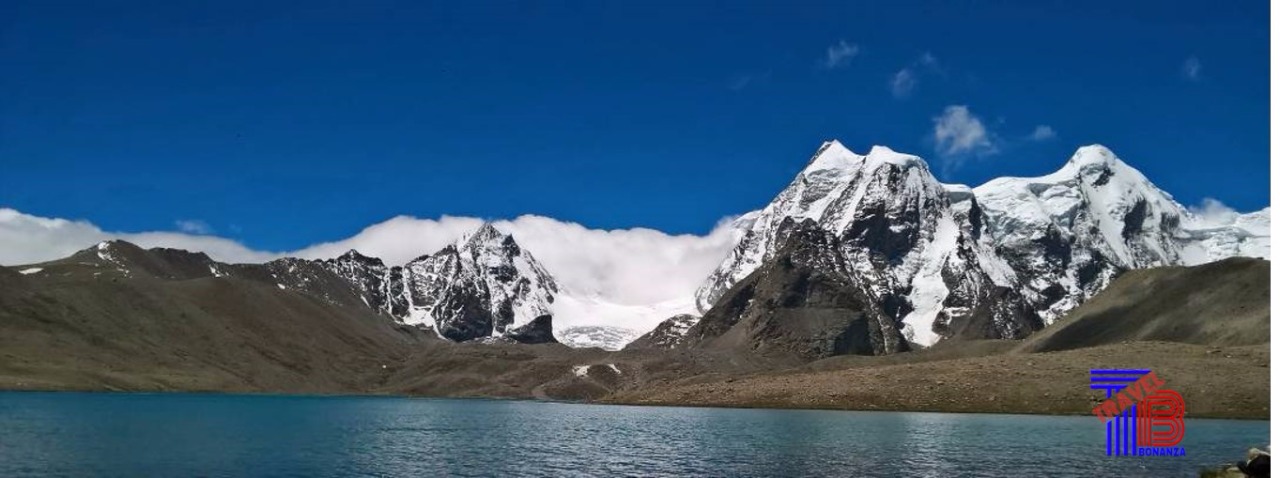
Amazing Site. Really enjoyed reading.
It’s actually a great and helpful piece of info. I’m satisfied that you shared this helpful information with us. Please keep us informed like this. Thanks for sharing.
Hey there, You’ve done an excellent job. I’ll definitely digg it and personally suggest to
my friends. I’m confident they’ll be benefited
from this web site.
Visit my page :: delta 8 thc